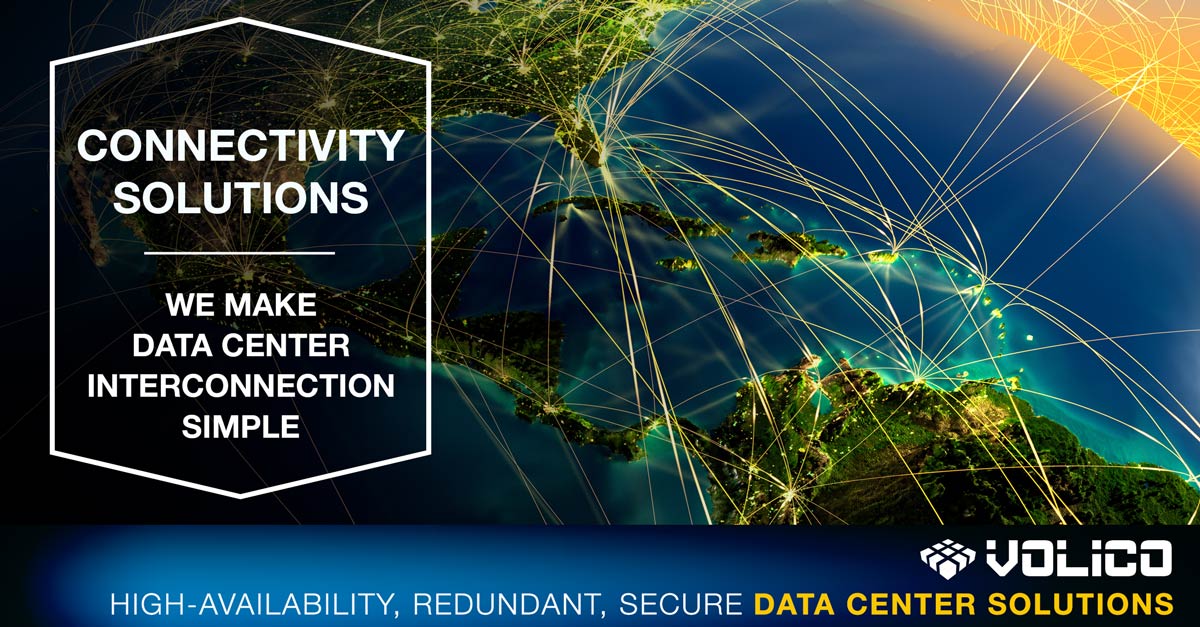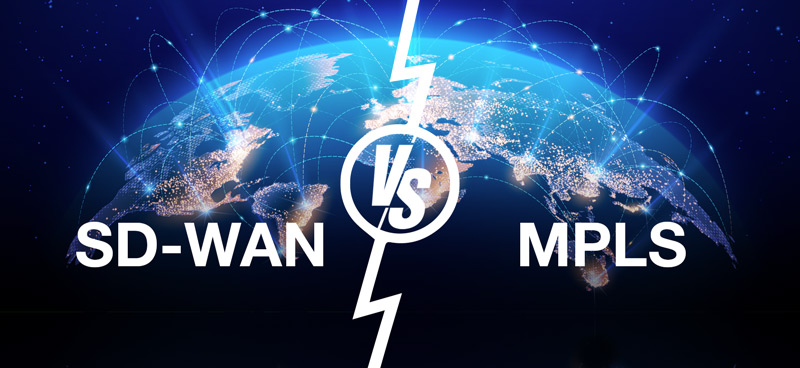SD-WAN vs MPLS? Which networking technology is better? When looking for the best option for an enterprise, it quickly becomes clear that both have their advantages and some drawbacks, and choosing the right solution will largely depend on the context of usage. Multiprotocol label switching, or MPLS, has been around for a while now, proving its value as a reliable, mature technology. The newer SD-WAN can offer many benefits over MPLS; however, the choice should be determined by the situations in which they are applied.
In this article, we will look at both SD-WAN and MPLS and find their most prominent pros and cons to help you decide which is better and make an informed decision in the future.
What is MPLS in a nutshell?
Multiprotocol label switching (MPLS) is a traditional networking protocol. It’s a method used in transporting data from A to B quickly and neatly.
MPLS is a widespread approach for connecting local area networks (LANs), which, added together, constitute wide area networks (WANs). MPLS works by using specialized hardware routers to send data across pre-configured network paths. It does network traffic routing by using a label-switched path procedure. An MPLS network structure can support multiple virtual WANs.
MPLS has been around for more than two decades and is valued for its reliability and efficacy. However, when it comes to choosing between SD-WAN or MPLS, some companies require more flexible solutions.
What is SD-WAN in a nutshell?
In contrast to the hardware-based MPLS, SD-WAN is the software-based (SD stands for software-defined) method of managing WAN. SD-WAN is a newly evolved version of connectivity protocols that simplifies the administration of the WAN.
One of the main differences between SD-WAN and MPLS is that SD-WAN runs on ordinary internet and doesn’t require any special routers to connect LANs. This makes it a competitive and popular solution.
Moreover, implementing the SD-WAN configuration doesn’t exclude MPLS: an SD-WAN can use MPLS as one of its networking methods, creating a hybrid solution for leveraging benefits from both technologies. This way, based on the traffic of a business, an SD-WAN can switch between different transport methods based on the need: MPLS circuits, direct broadband connection, or LTE/5G, depending on which is the fastest and most efficient solution possible.

SD-WAN vs MPLS: the Benefits
Both SD-WAN and MPLS offer a way of connecting and managing a WAN. But while MPLS has been used for quite some time now, SD-WAN is booming in popularity because of its new advantages. Let’s see why some companies prefer the SD-WAN in the SD-WAN vs MPLS dispute.
SD-WAN is easier to manage and more affordable
When comparing SD-WAN vs MPLS, simplicity may be the first advantage of SD-WAN.
While MPLS requires specialized routers to complete tasks, SD-WAN runs on any kind of networking hardware. No tethering to hardware – no time-consuming manual configuration.
Because of the expansion of the cloud, WAN traffic is growing. And the prices follow accordingly. Buying new hardware pieces to keep up with bandwidth needs can be pricey. As a benefit of SD-WAN vs MPLS, SD-WAN can use the public internet as a less-expensive option.
SD-WAN offers more flexibility
When choosing between SD-WAN and MPLS, consider that SD-WAN can offer the flexibility to use different connectivity options like private lines, broadband internet, or 5G. SD-WAN connections can direct traffic and add capacity as needed by bringing together multiple types of connections. Also, SD-WANs don’t have fundamental bandwidth limits.
With the flexibility of combining and switching between connections, SD-WANs can increase capacity at need and choose the fastest connectivity option possible.
Because MPLS connections are immutable without being reconfigured, their capacity does have limits. Moreover, any change made to an MPLS network can take a lot of time because of its fixed nature. On the other hand, an SD-WAN architecture can be reconfigured in a few minutes because of its flexible, virtualized makeup. Therefore, flexibility points in the SD-WAN vs MPLS rivalry are won by SD-WAN.
Network Performance
While MPLS reliably brings the same level of performance its configured capacity allows for, this approach might not be the best solution for all traffic requirements. Some applications, like video calls, for instance, require more flexibility because of their latency concerns. There might be several different types of traffic going through the same connection; however, latency-sensitive ones have to be prioritized. MPLS doesn’t have the possibility and tools to provide the dynamic reaction these situations require.
The difference between SD-WAN and MPLS, in this case, is that SD-WAN can recognize different applications and adjust. It can identify drops in bandwidth availability and make decisions to create direct tunnels and provide latency-sensitive applications with the resources they require. Additionally, because of the high adaptability of SD-WAN, it is easily scalable, which is another important benefit many prefer to have.

SD-WAN is service provider agnostic and connects better with the cloud
MPLS usually limits companies to using the same carrier for all WAN-connected sites. This is mainly because MPLS services run on dedicated private lines catered by the service provider.
SD-WAN vs MPLS is different in this too: SD-WAN is service provider agnostic. Meaning that it has the perk of interoperability.
Because of this, SD-WANs, with their easily supported connections, can run on the public internet and integrate with the cloud much more easily.
On the other hand, an MPLS can’t connect to the cloud without the service provider being involved. In their case, connecting to the cloud means that a direct route has to be built to the specific cloud provider’s infrastructure.
SD-WAN vs MPLS – security features
As a final point of comparison of SD-WAN vs MPLS, let’s take a look at security.
MPLSs have the perk of working with private connections through the service provider’s internal infrastructure. While the public internet connections SD-WANs use can be considered less safe, the private connections MPLSs use are not inherently safe either. This is partly because MPLS solutions don’t offer analysis of the data they transport, the chore falling on the client’s shoulders.
So, it becomes the client’s obligation to check the traffic for malware and deploy security functions and firewalls at the ends of the connections.
Nonetheless, some SD-WAN solutions also face challenges when adding security afterward as an overlay. Still, in most cases, SD-WAN routes are encrypted end-to-end and have the possibility to leverage security features delivered by the cloud’s SASE architecture.

SD-WAN vs MPLS: the Drawbacks
While SD-WAN seems to win in the SD-WAN vs MPLS competition, there are some situations where MPLS holds its ground better.
MPLS: a clean and secure environment
In some applications and transactions with specific types of data, sometimes higher grade security and data integrity are a must-have. MPLS can provide a reliable, clean, and secure private connection that makes working with these types of data possible.
MPLS offers more control over routes
Since MPLS routes can only be configured and updated manually, the routes data packets can take are pre-defined. MPLS data packets can only be forwarded between pre-established routers and networks. Therefore, MPLS packets never deviate, unlike in the case of the SD-WAN, where packets can take different routes, risking being lost in transit.
For some enterprises, this detailed level of control is required; thus, MPLS remains a preferred, reliable method to choose.
MPLS, a consistent and dependable technology
When choosing between SD-WAN and MPLS, the maturity of MPLS technology has its advantages. It is generally considered a very reliable solution. As stated above, MPLS offers the certainty of fixed traffic routes, guaranteeing that the occasional packet loss doesn’t happen. MPLS services often come with Quality of Service guarantees included.
Conclusion
Both SD-WAN and MPLS offer a different approach and have significant perks. In today’s world, many enterprises prefer the flexibility of SD-WAN, but many stick with MPLS for its well-established reliability.
For those who want to leverage the best of both solutions, the possibility of using the two combined is still available. MPLS can be used as part of an SD-WAN as a hybrid solution. This allows for those specific transactions that require MPLS to be run over MPLS while leveraging all the other benefits of the SD-WAN. Which is better is determined by the context of application for each situation in particular.
Got questions? Want to talk specifics? That’s what we’re here for.
Have one of our experts contact you to talk details. Discover how our network and infrastructure services at Volico Data Centers can help you with flexible and efficient solutions for your particular cases of use.
• Call: (305) 735-8098
• Chat with a member of our team to discuss which solution best fits your needs.










